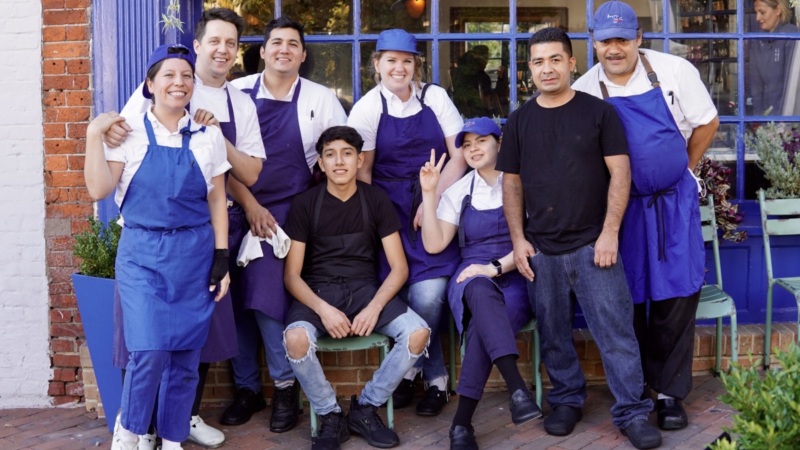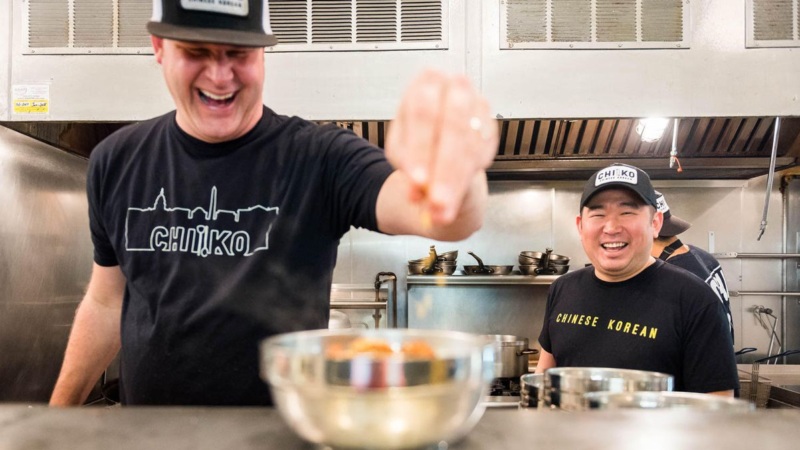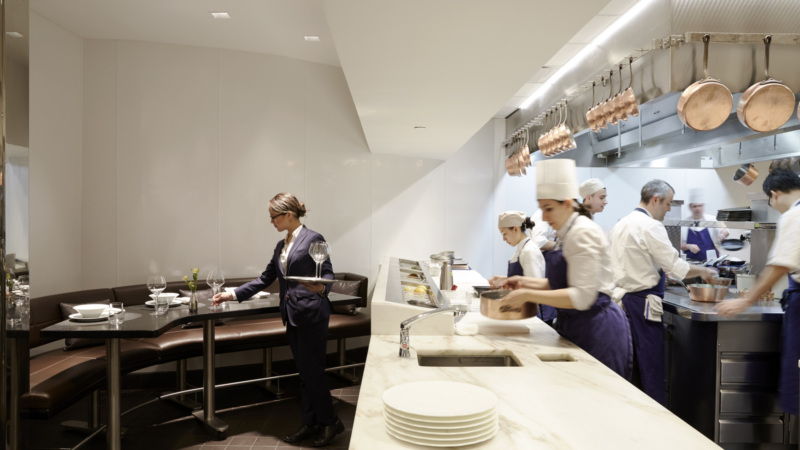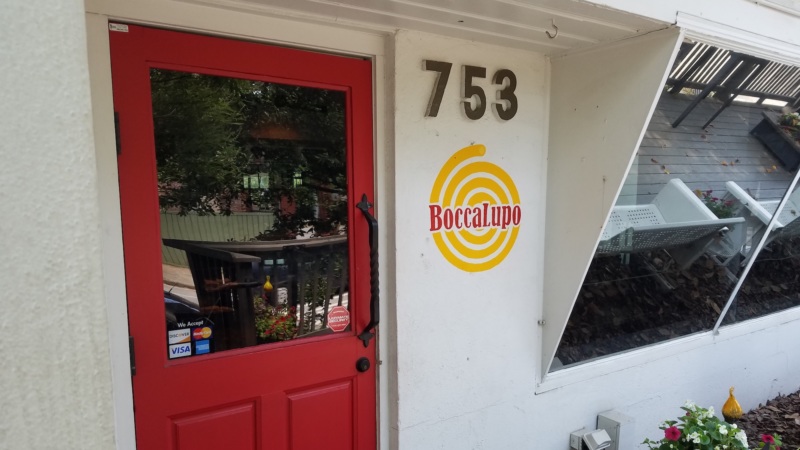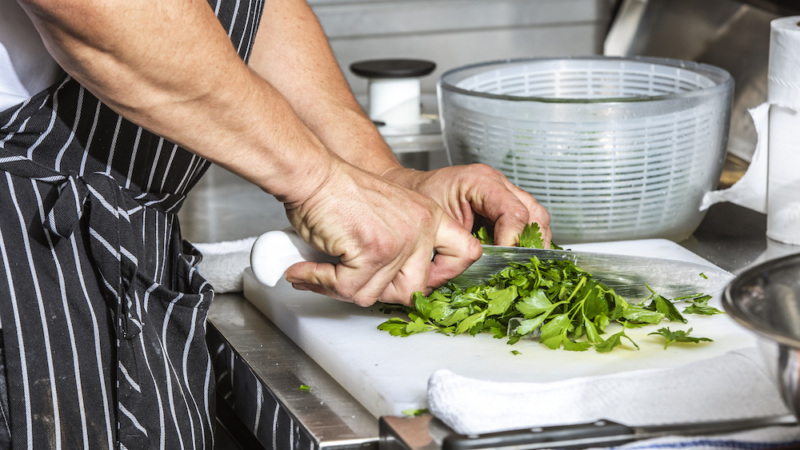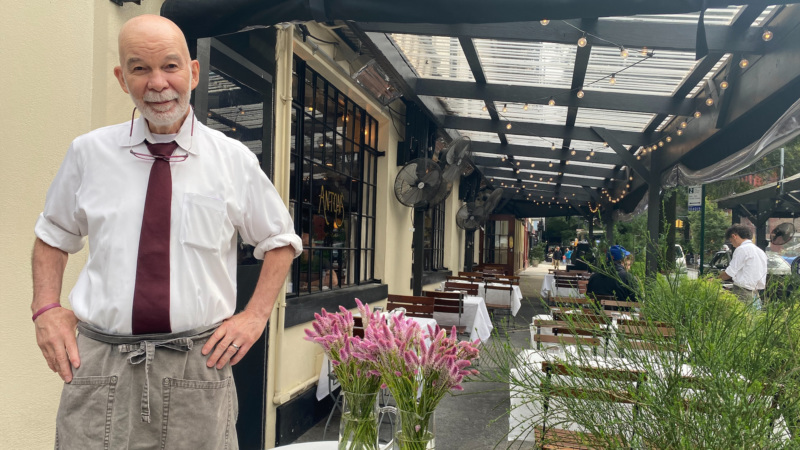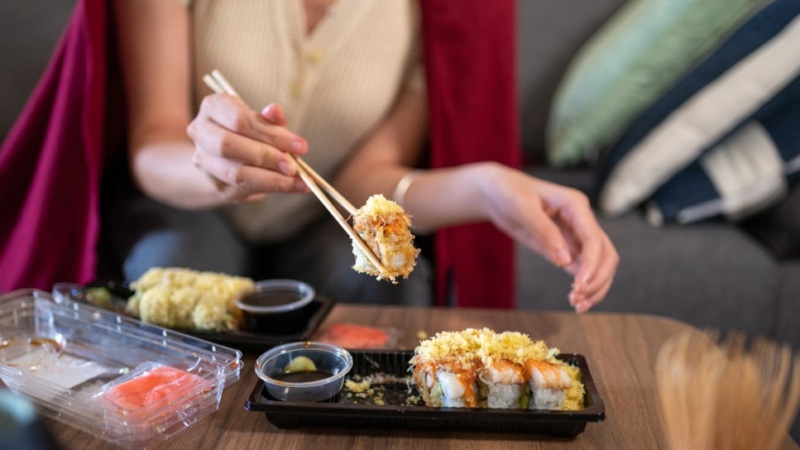
Email Marketing for Restaurants: What You Need to Know
We know restaurants are looking for ways to boost earnings, which is why we’ve provided resources on menu engineering, consumer sentiment data and trends, and a tool to measure the viability of potential new revenue streams. To ensure you see a return on your investments, keep your diners informed and aware of the different ways they can take advantage of your offerings. Alex Johnson, Email Marketing Manager for Resy, says email marketing campaigns are essential tools for any restaurant’s operations, especially during the pandemic. “Right now, more than ever, people have a lot of questions,” says Johnson. “Putting answers in writing in an email can keep your loyal customers informed and is a very cost-effective way to increase booked reservations and traffic to your restaurant.” Johnson gives us her best tips and tricks for starting an email marketing program, providing engaging content, crafting effective subject lines, using images to your advantage, and leveling up with segmentation and personalization.
Don’t Be Afraid to Get Started
To get started with an email campaign, first compile a current list of your guests’ email addresses. Resy customers can pull a list of guests that have dined in your restaurant in a selected month from the Monthly Guestbook section of the Resy OS Analytics portal in the Dashboard. You can find additional instructions on how to access it here.
To capture additional email addresses from those who may have visited your website or social media pages but have not yet dined with you, Johnson recommends adding a section and a reminder where guests can subscribe for updates. “You can provide an incentive for people to enter their information, like a free appetizer or getting to be the first to hear about new events and menu updates.”
Once you have your list of email addresses, Johnson cautions against sending out any communications by adding the whole group to an email in your regular client (think Gmail, Yahoo, Hotmail, etc.) using the BCC function. “While some may think, ‘Oh, it’s just easier to send something via BCC,’ that’s just not sustainable and won’t save you time in the long run.”
Signing up for an email service provider (ESP) requires a small investment in time, but many platforms offer free versions with tons of resources to get you started, “Even if you aren’t super tech savvy, a lot of ESPs are very user-friendly at the most basic level and will end up saving you a ton of time,” says Johnson. “I know it can feel intimidating, but once you start, you’ll see there’s a pretty low barrier to entry and you’ll have so much more power and save so much more time.”
Content Ideas To Keep Your Diners Engaged
So you’ve got your list of diners and you’ve signed up with an ESP. Now what should you say? Use these four categories as a guide for creating engaging content.
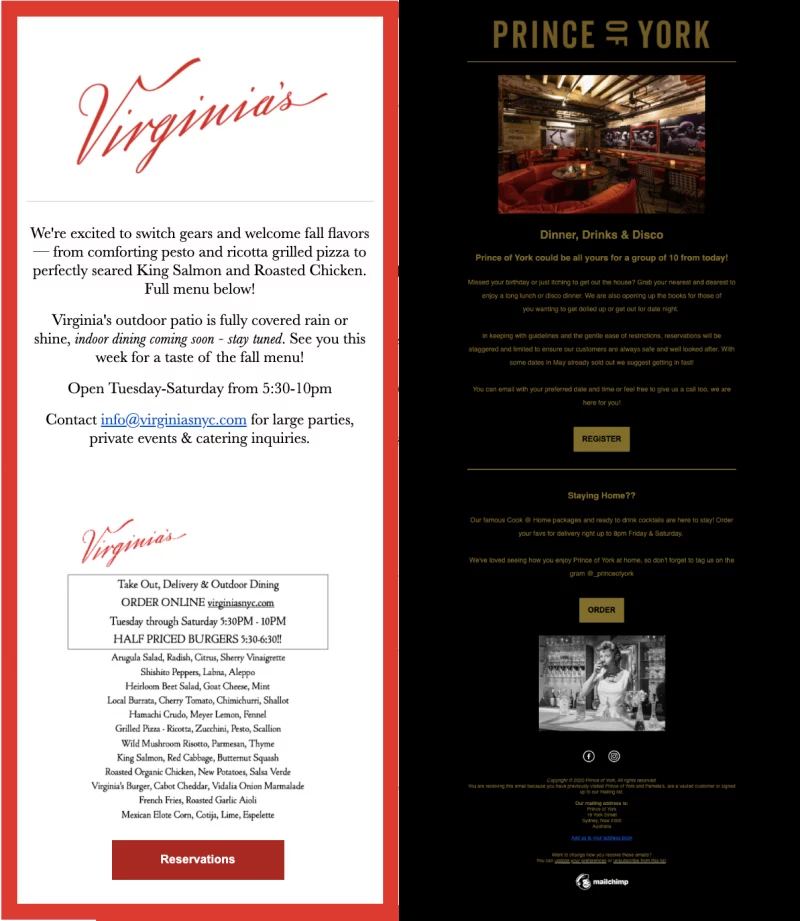

- What’s Happening at Your Restaurant? At the most basic level, use emails to keep diners informed about updates to the status of your restaurant as dining restrictions continue to evolve around the world. “With many restaurants opening up patios, adding takeout through third party vendors, and dealing with addressing new curfews and shifting regulations, you want to keep reminding your guests about these changes so they know where and when to find you and your food,” says Johnson.
- What Are You Excited About? If there’s something new happening that you’re passionate about, it’s likely your diners would be too. “If there’s a seasonal menu change, collaboration, special dish, or pop-up that you’re excited about, email is the place where you have the words and space to tell those stories,” says Johnson. “Share anything that gets you fired up.”
- How Do You Feel? The current climate for restaurants has provided the opportunity to be very transparent with diners about their goals and challenges. If you feel compelled to share what’s happening behind the scenes, diners will appreciate the authenticity and sense of intimacy from getting this perspective on their favorite establishments.
- Who Inspires You? If you have nothing new to share from your own business and team, look to other restaurants, suppliers, or thought leaders you admire and share their content with your diners. Shining a light on other local businesses also helps foster a sense of community.
Breaking Down the Anatomy of a Great Email
To ensure your email is opened and read by as many diners as possible, Johnson shares her best practices for subject lines, copy, and images.
Subject Lines
- Shorter is better because long subjects get cut off in previews. “Whatever is the most important piece of information should be put in the beginning of the subject just to ensure it gets seen.”
- Effective subjects should introduce the reader to the Call To Action (CTA), which is what you’re asking the reader to do in the email copy. “Including something like ‘Book Now’ or ‘Buy Your Tickets’, whatever the action you’re asking people to take from the email, is a great way to hammer your point home.”
- Certain words included in a subject tend to increase the likelihood of someone opening the email. “The word ‘new’ performs really well because people want to hear the latest information. Subject lines that start with numbers also tend to perform well. So if for example, you have three new menu items, your subject should be ‘3 New Menu Items for Fall’ instead of ‘New Menu Items are Here’”.
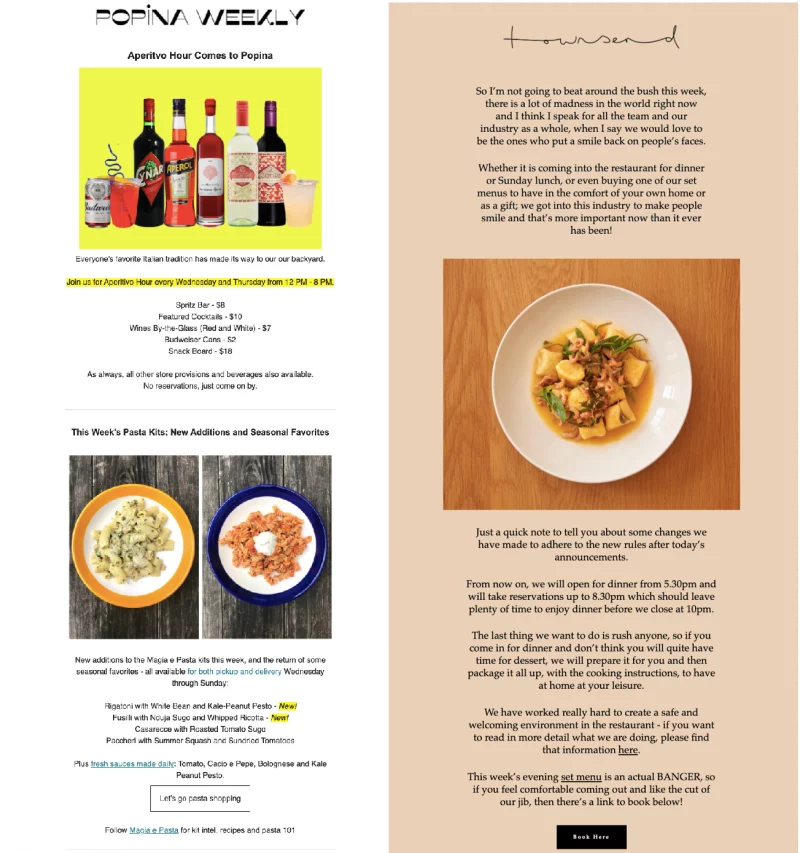

Email Body Copy and Images
- Make sure you include some sort of call to action (CTA) in your emails. Whether it’s a button that says “Book Now” that directs to your Resy.com page, a link that takes diners to your new menu, or an icon that asks diners to follow your social media account, you want to give your readers something to act on and keep their attention.
- Images are powerful, so don’t slack on adding them. “Imagery is honestly equally important as the copy. We’re in such a visually focused time and when people see a photo of something, that’s often what compels them to actually book a reservation.”
- Once your text and images are set, avoid an embarrassing rendering issue by sending your email to yourself and a few employees to view the email across different platforms. “If people see a blank box or an ‘x’ where an image should be, that’s where you lose people. It’s so easily avoidable but a really common mistake.”
The Next Level: Segmentation
Once you’ve got the basics down, you can amplify the effect of your messages by diversifying your campaigns through segmentation. With segmentation, you can divide your audience by any metric you choose and send tailored messages to specific groups.
One of the most common ways restaurants can segment their campaigns is by frequency of guest visits, which you can pull from your Resy Guestbook data. “You can give your most loyal diners early access to information and events, or just share the news of something new with them first,” says Johnson. “Or if you previously had a virtual wine tasting and have another event coming up that you think that group would be interested in, you can send a specific targeted message that says, ‘Hey, we know you liked our wine tasting, please join us for our next one on this date.’ The personalization really makes a difference and shows your guests that you provide a high level of hospitality.”
For more resources and best practices for email marketing, Johnson recommends the blog at customer data platform Simon for their clear and concise posts on a variety of marketing topics. For step by step instructions on sending your first email blast using your Resy guestbook, check out this article. For additional resources for small businesses including discounts on email service providers, visit our parent company American Express’ Small Business Resource Center for US based venues here, UK based venues here, and Australia based vendors here.
*Opinions and views in articles shared on Resy OS are presented for the purpose of discussion and commentary on topics of interest in the restaurant industry; they should not be viewed as substitutes for advice given by professionally engaged business consultants and advisors.
Discover More



